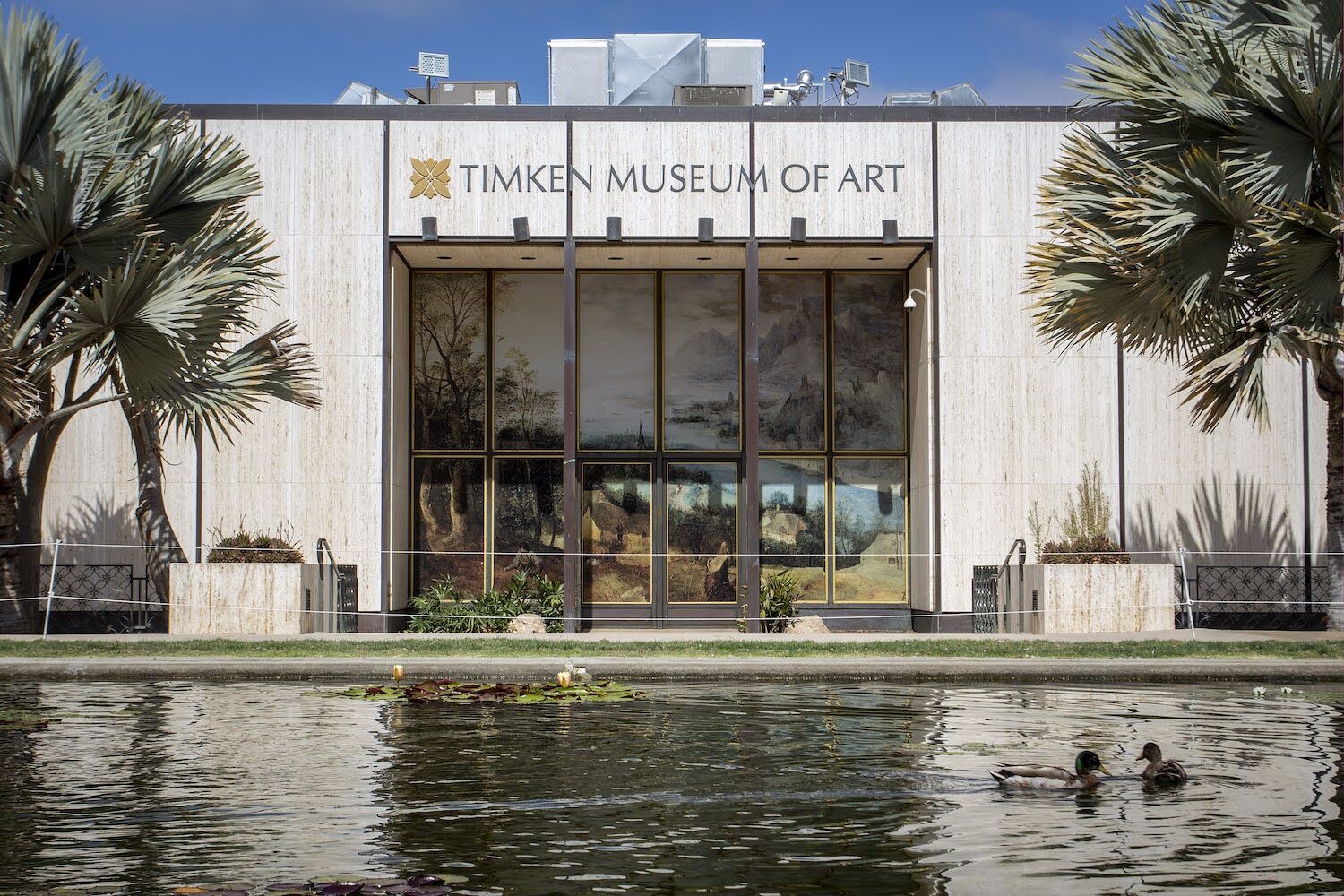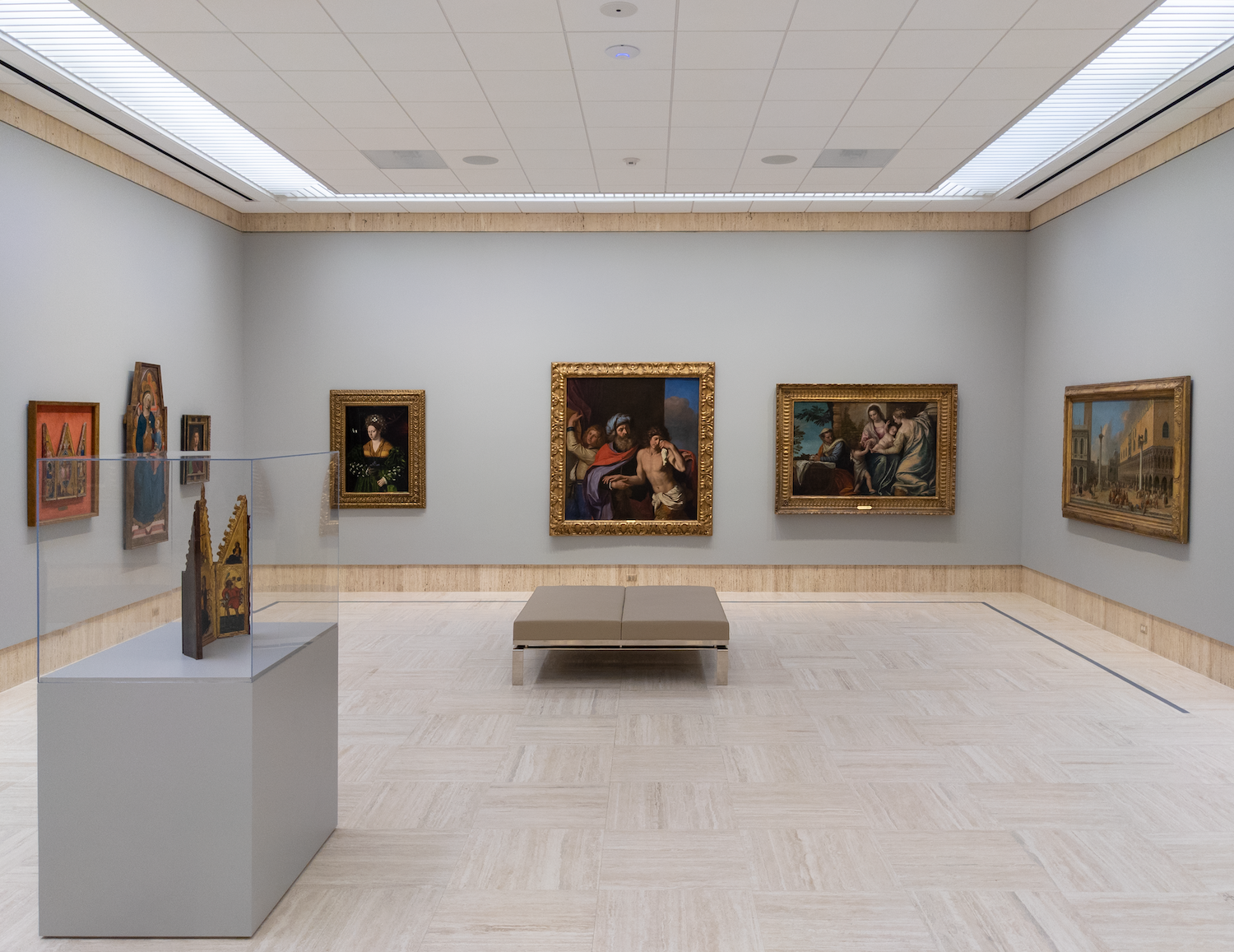
Timken exterior
Americans spent the pandemic gussying up their homes, and San Diego’s art museums did the same. Last fall, the Mingei emerged with an additional 50,000 square feet for exhibitions, a theater, a new restaurant, and more. April saw the breathtaking, $105 million recast of the Museum of Contemporary Art San Diego, La Jolla with four times the gallery space and works from the likes of John Baldessari, Larry Bell, Sam Gilliam, Robert Irwin, Barbara Kruger, Bruce Nauman, and Helen Pashgian.
But don’t overlook the sprucing that happened at 57-year-old Timken Museum of Art, known as the “jewel box of Balboa Park.” Closed for two years during the pandemic, a far more modest $3 million did it well—renovating the bones and modernizing exhibition spaces. Six refurbished galleries feature newly painted neutral walls, which creates a stark relief for chronologically organized art. The didactics have been given new details and perspectives, and high-end HEPA filters benefit both visitors and fragile masterworks.

Timken gallery
About the art: it’s old, impressively so. Parable of the Sower by Pieter Bruegel the Elder is a Dutch-Flemish Renaissance work finished in 1557, a full 200 years before missionaries landed in San Diego. The painting’s hazy, bucolic scene—a river, a mountain range, a peasant scattering seeds—symbolizes the importance of giving to others. As one of the Timken’s 84 classic art pieces, it expresses the venue’s mission of embracing art to enrich lives and nurture creative spirits.
Other significant treasures include Bartolomeo Veneti’s Portrait of a Lady in a Green Dress (1530), Luca Carlevarijs’ The Piazzetta in Venice (1700-1710), and Ella Ferris Pell’s Salome (1890), and Jean Baptiste-Camille Corot’s View of Volterra (1838), which illustrates the rugged countryside of the Italian town and is an early example of Plein-air painting.
PARTNER CONTENT
The museum’s fall exhibition, “Exchanging Words: Women and Letters in Seventeenth-Century Dutch Genre Painting” (September 18 to December 31), features a Timken work, Girl Receiving a Letter (1658) by Gabriel Metsu and other paintings that were considered provocative at the time—because they all portray women absorbed in intellectual pursuits.

















